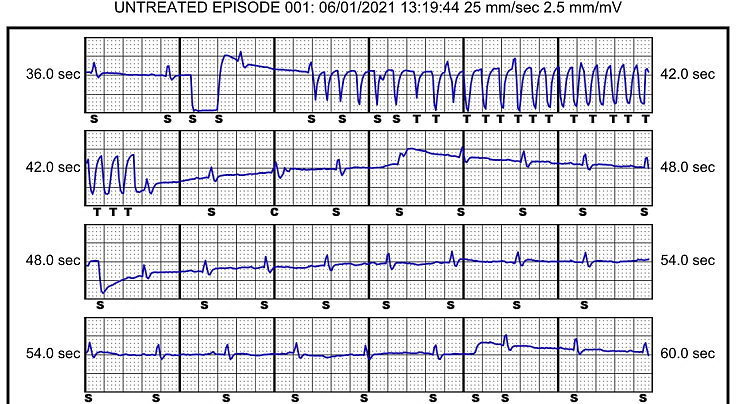August 2021
Arrhythmia episodes recorded one day post subcutaneous ICD (S-ICD) implant. What is the cause?
Emma Wright
Highly Specialist Cardiac Physiologist – St Georges University Hospitals NHS Foundation Trust
Disclosure: The author has no conflict of interests to declare.
Background
A 32-year-old male presented with an out of hospital cardiac arrest and underwent implantation of a secondary prevention subcutaneous implantable cardiac defibrillator (S-ICD). The implant procedure was performed under general anaesthetic and was uncomplicated, with the secondary sensing configuration (lead tip to can) selected by the automatic device set up. The system integrity was confirmed with a defibrillation threshold test. Ventricular fibrillation (VF), was successfully induced and treated appropriately with a single 65 joule shock, recording a satisfactory shock impedance.
The following day a post implant check was performed. The check revealed multiple stored ‘untreated’ arrhythmia episodes. An example of an episode is displayed in figure 1. The check also revealed some baseline wander in the secondary and alternate sensing vectors, but not in the primary vector (figure 2). Device settings are displayed below.
Untreated S-ICD episode – an episode where tachycardia detection occurs, the device starts charging, but aborts the shock as the tachycardia rate confirmation algorithm criteria is not met, often because either the rhythm self-terminates or drops below the tachycardia detection rate
Device Settings:
Shock Zone: 230bpm. Conditional shock Zone: 200bpm. Smart Pass: ON
Sensing configuration: Secondary. Gain setting: 1X

Figure 1 – Example 1 showing a subcutaneous ECG (S-ECG) untreated episode recording discovered at the post implant check. The sensing vector programmed is the secondary configuration.



